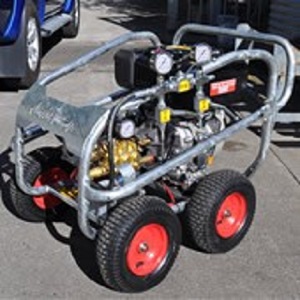Pressure Cleaner Storage And Maintenance Tips
Most, if not all, pressure washers are designed to offer decades of reliable and efficient service to their owners. They are more or less like other powered products used at home. One has to be cautious when using and storing the appliance. Ignoring storage and maintenance tips can easily lead to damaged parts or in worst cases engine breakdown. To avoid such scenarios, consider the following pressure cleaner storage and maintenance tips.

Storage
Pressure cleaner storage can be divided into two categories – long term storage and short term storage. Short term storage is simple. All one needs to do is clean dirt and debris off the pressure cleaner after each use then store the unit in a garage, store or any other outbuilding storage unit where accessing the pressure washer can be easy.
Long term storage is a little different. It happens where one intends to store the appliance for at least two months without using it. Start by filling the pressure cleaner’s fuel tank with fuel. Then add some gasoline stabilizer in the fuel tank to ensure the stored gas does not erode. Remember to guard the pressure cleaner against pump freezing and rust if you intend to store it in a cold environment. For that, you will need a good pump saver product which can be bought from most automotive spare part stores.
Spring cleaning and de-winterizing
Successful spring cleaning and de-winterizing always depend on how well the pressure washer was stored when it wasn’t in use during winter. Cleaning should be easy if you cleaned the pump or used a good pump preserver before long term storage. Expect an uphill task if you just hosed the pump off and put it in a garage. You may have to buy new parts if the pump was exposed to freezing degrees for a long time. Be sure to take the pump to a reputable repair center before you can consider buying new parts.
Maintenance
Pressure cleaner maintenance is easier compared to storage. It is all about inspecting your pressure washer for glitches and ensuring that the pressure has the right engine oil levels every time you intend to use the appliance. If the pump is an electric model, always ensure that the electric cord and plug are flawless. Inspect them for damage and replace as needed. Be sure to have an expert around to help you fix the pump with the right cables and cords.
Troubleshooting
Be careful when troubleshooting your pressure cleaner. Different models often call for specific troubleshooting techniques. That is why no two different models resemble each other. Troubleshooting an engine failure problem in one model can be as easy as turning off the engine and ensuring the wires that power the spark plug are connected. Troubleshooting the same problem in another model could be more complicated and may even involve checking out for loose fittings around the engine. With that in mind, always refer to your pump’s user manual when troubleshooting. Avoid making guesses where troubleshooting options provided in the manual don’t seem to work, and simply contact a licensed pressure washer technician.
